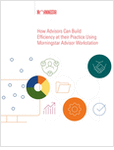Last year ended with a strong quarter as U.S. equity markets recovered from a tough third quarter. This resulted in a volatile, yet flat 12-month performance. As a blend of multiple asset classes, target funds experienced the mixed performance of global markets and ended the year slightly down on average, note experts at Morningstar and Ibbotson Associates in a recent report.
Some 385 target funds from 46 fund families or groups gained 6.8% during the quarter, but they ended the year down an average 1.6 %. In terms of asset flows, quarterly movement bounced back after several consecutive weak quarters of flows, according to Morningstar/Ibbotson. For the quarter, target maturity funds saw more than $9.7 billion of inflows.
Target-fund returns experienced a welcome bounce-back during the fourth quarter, say report authors Tom Idzorek, global chief investment officer, Morningstar Investment Management, and Jeremy Stempien, senior consultant, Ibbotson Associates, noting that they lost an average 11.8% in the third quarter.
“As is typical, the average target maturity fund return is approximately midway between the S&P 500 (11.8%) and the return of the BarCap U.S. Aggregate Bond Index (1.1%),” they explain.
“Somewhat atypically, the average target maturity fund return bested the average return of the Morningstar Lifetime Moderate Index by 0.4%, which is impressive given the consistently strong performance of the index discussed in last quarter’s report,” the authors note.
The Morningstar Lifetime Allocation Index, based on Ibbotson’s Lifetime Asset Allocation methodology, turned in positive returns last quarter (3-9%). For the full year 2011, the best performers were funds closest to retirement, research shows, and there was an extremely wide range of performance (between minus 4.5 and 5.7%). “During the last three years, the overall returns of the indexes have been outstanding with some returns exceeding 14%,” the report explains.
Asset Classes
In the fourth quarter of 2011, many groups were able to reverse the third quarter’s poor returns, including funds in most higher-risk assets, and all asset classes posted positive returns over the period; domestic equities showed the strongest gains.
The top performers were small-cap equities and U.S. REITs, which rose more than 15%. Large-cap U.S. equities also had double-digit gains, while non-U.S. equities struggled on a relative basis but posted positive returns.
Diversified commodities (as represented by the DJ UBS Commodity Index) were slightly positive for the quarter. The S&P GSCI Index, another popular commodity index with a much heavier energy weighting, gained nearly 9%.
“Within fixed income, high-yield bonds were the largest beneficiary of the fourth quarter’s ‘risk-on’ environment,” the report shares. The group’s 6.5% gain was the largest since the third quarter of 2010 and the largest among the fixed-income asset classes reviewed. TIPS returned more than 2% for the fourth quarter in a row, thus easily topping U.S. aggregate bonds, short-term bonds, and cash (which posted gains of 1.1% or less).








 February 24, 2012 at 07:00 PM
February 24, 2012 at 07:00 PM










